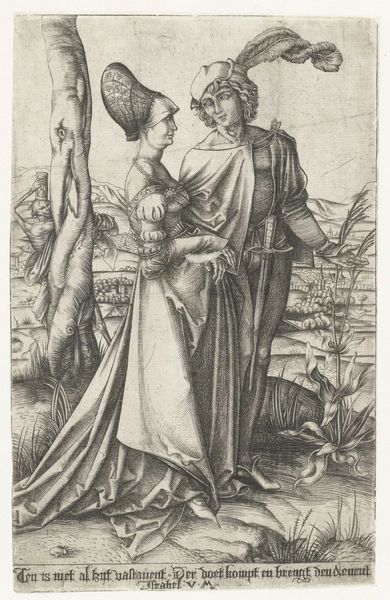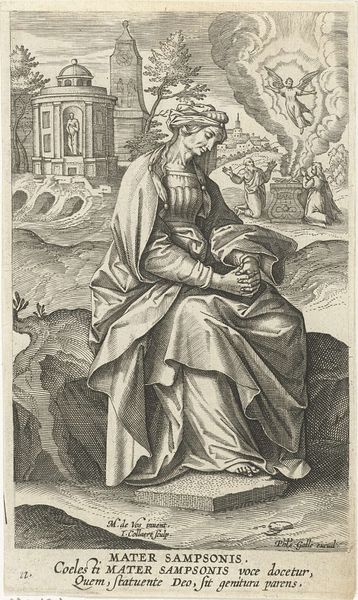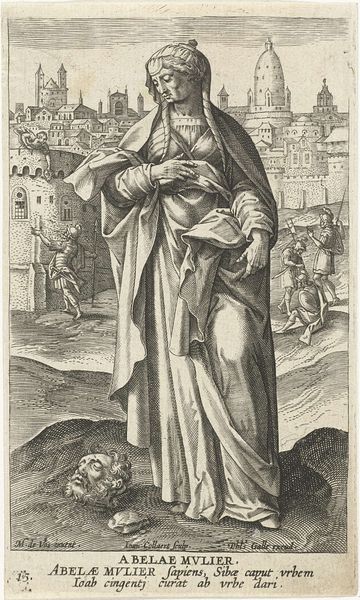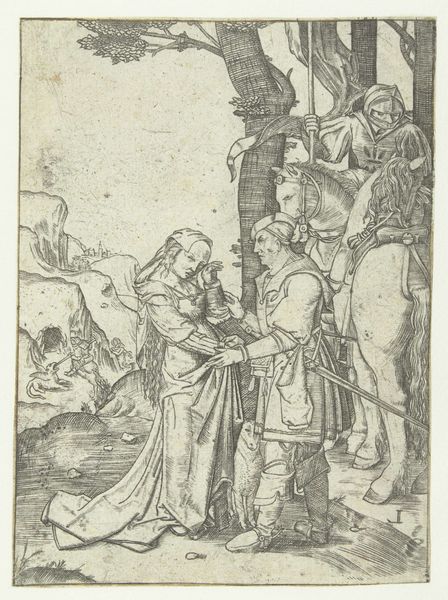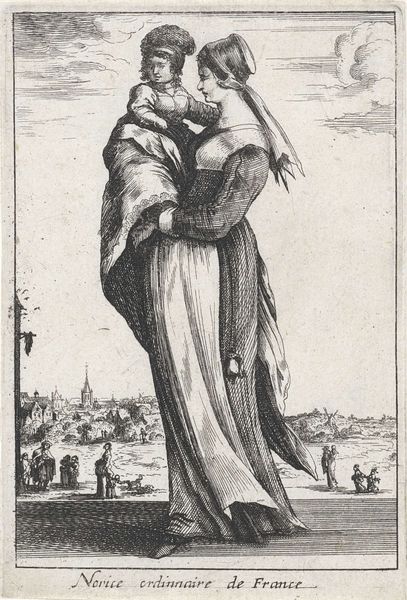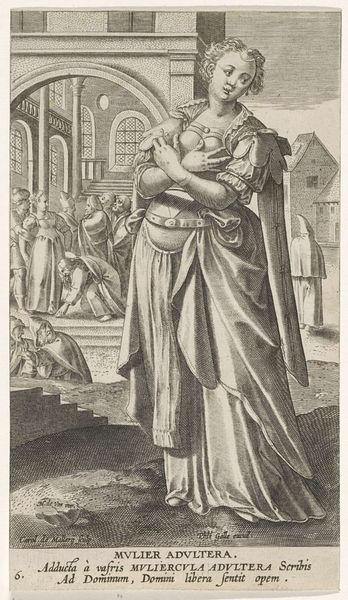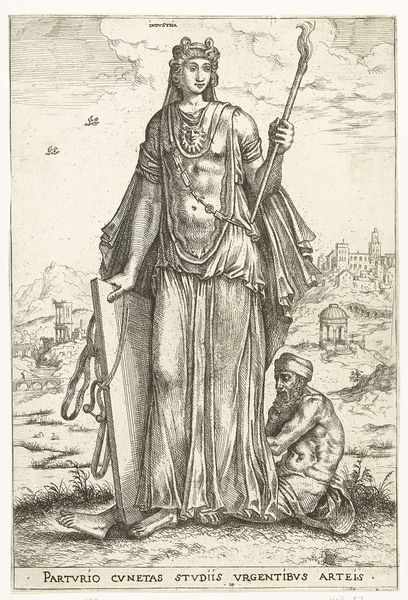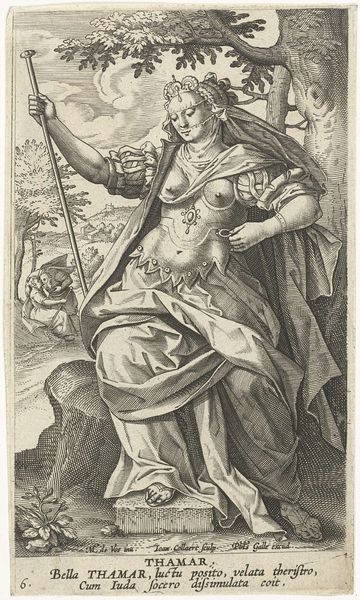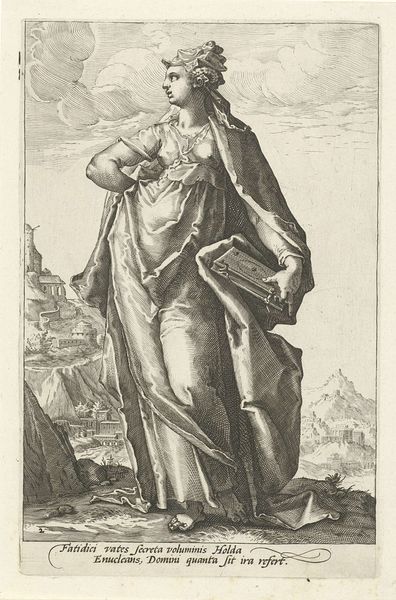
print, engraving
#
portrait
#
baroque
# print
#
old engraving style
#
figuration
#
line
#
cityscape
#
portrait drawing
#
history-painting
#
engraving
Dimensions: height 159 mm, width 95 mm
Copyright: Rijks Museum: Open Domain
Editor: This is "Rachab," an engraving from somewhere between 1588 and 1595, made by Jan (II) Collaert. It’s currently at the Rijksmuseum. It seems like a rather idealized depiction of a woman against the backdrop of a detailed city. What do you see in this piece, particularly considering its historical context? Curator: Well, immediately, the title, “Rahab,” directs our attention. She's a fascinating figure from the Old Testament – a woman who helped the Israelites conquer Jericho. Consider that Collaert was working in a time of intense religious and political upheaval, the Dutch Revolt. Does the representation of Rahab here - almost statuesque, holding the rope that helped the spies escape - seem heroic, or something else? Editor: Heroic, definitely. She seems confident, almost defiant, and I see how that rope might signify resistance. Is there something in the way the print itself was distributed that might shed light on that resistance? Curator: Exactly. Prints were powerful tools for disseminating ideas and shaping public opinion. This image would have been circulated widely. Notice how she is presented, almost centrally and in a prominent position over the rest of the other elements of the drawing such as the city scape in the background. Considering that, who do you think the artist tried to represent with her? The woman of people fighting for justice and against opressors? Or the godly righteous fighter who deserves to be remember centuries after what she did? Or perhaps something completely different? Editor: I see what you mean. Seeing it that way, she symbolizes the defiance against those times’ oppresors, and a moral example. I hadn’t considered the role of prints as a means of propaganda back then. Curator: Right. It forces us to confront how narratives get constructed and used for specific socio-political ends. This engraving shows that the history and power are very often correlated. Editor: It's made me rethink my assumptions about these kinds of religious depictions; how easily they could be twisted and utilized. Thanks! Curator: Absolutely! Analyzing art through history offers an incisive understanding of a range of societal values.
Comments
No comments
Be the first to comment and join the conversation on the ultimate creative platform.
